5 Snake Attracting and 22 Snake Repelling Plants
Just as there are plants that can repel snakes, there are also plants that attract snakes into your garden, lawn, or yard.
There is an astounding variety of plants and flowers that have different properties, and with all the variety of plant species available, there will be plants that have opposing effects on certain animals, such as snakes.
It is important to know which plants attract snakes and the plants that repel them so that the gardener can determine what to plant in the garden to suit their purposes.
Plants that are said to attract snakes include flowering plants, groundcover, sandalwood, queen of the night, and cedar. Plants that attract and have a practical use for snakes include thick growth, rosemary, jasmine, morning glory, clover beds, plants under bird feeders, groundcover, brush, and low vines.
Certain plants attract snakes, and if you want to tend and own a garden without snakes, you have to make sure you do not plant and cultivate these plant species from your garden.
Snakes have a higher likelihood of paying a visit to your property or even decide to stay there if the plants there are attractive to them.
How certain plants attract snakes or repel them is important to determine if you would have that ideal garden or yard that you can use and enjoy.
How Do Snakes Smell
Snakes use their flicking tongues to gather molecules in the air immediately surrounding them.
They then get their tongues to touch the Jacobson’s organ, which has two sensory parts located at the roof of their mouth.
This organ sends the information of the collected molecules to the brain and lets the snake know the aroma that they are experiencing.
This is how snakes essentially “smell,” which is a different method that other animals and we use for olfaction.
It is a very sensitive and very effective means of getting information around them, including plants that can emit odors that they might find unpleasant.
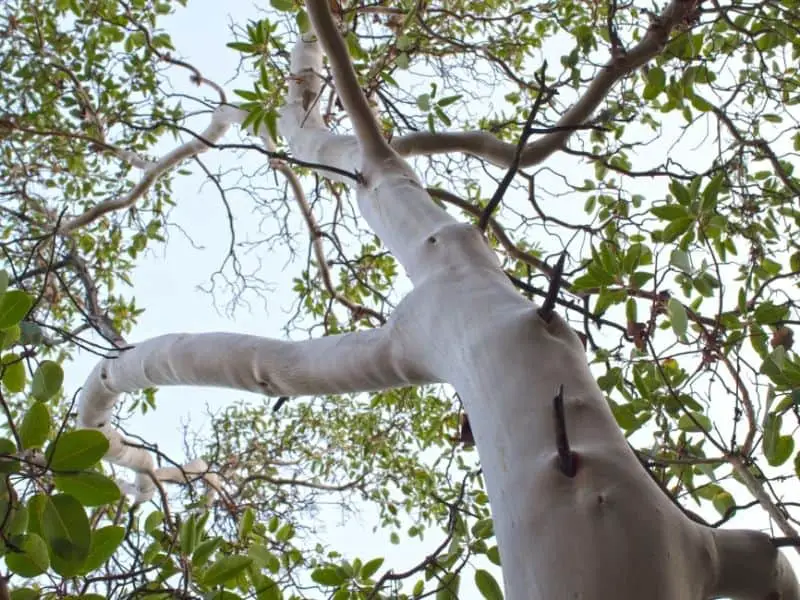
5 Plants That Attract Snakes
Some people would want to attract snakes to their property and want snakes as their guests because of the advantages that snakes provide in their surroundings.
Meanwhile, the vast majority of property owners would want to repel those snakes.
We will therefore identify both the plants that attract snakes and those that repel them. We will also offer tips on how to repel snakes by other means.
To easily get snakes to be attracted to your garden, you may try some cost-saving and affordable methods that do not cost much money.
This involves growing some herbs and plants in the area that snakes want to get close to. Having these will significantly increase the likelihood of snakes visiting you.
Snakes are attracted by yards or gardens where the grasses, bushes, and other vegetation are not trimmed and are left to their own devices. These provide ample hiding and resting places that snakes want.
As with other animals, snakes are a very important component of many ecosystems.
They can control and repel a lot of pests in your garden. It is very good to have snakes on your property in an environmental sense, even if just the thought of being around snakes is terrifying to most people.
Some studies have shown that snakes like to bask in areas where there are plenty of flowers. Unfortunately for people who do not like snakes, almost every yard and garden contain flowers, especially since almost no one objects to flowers’ presence in their surroundings.
Below are discussed some of the plants that are believed to attract snakes in the garden. In essence, these beliefs center around the idea that plants and herbs that are fresh, possess strong fragrance, and provide groundcover are all attractive to snakes.
It may also be because snakes deliberately and quickly get attracted to these plants because they offer good hiding places and attract prey species that snakes love to eat, such as rodents, insects, and other reptiles.
However, the list below is only based on people’s beliefs and has not yet been shown scientifically to attract snakes.
These are simply anecdotes and traditional knowledge of people who have lived beside and within nature for a long time, usually in rural areas.
If you try to decide which plants to plant in your garden or yard and do not want snakes, it is good to keep in mind that these plants have been considered attractive to snakes but have not yet, in reality, been scientifically confirmed.
Flowers
There are some flowers that snakes can use. Some of these are morning glory, rosemary, and plants and flowerbeds of other plant species located beneath plant feeders. They are an ideal snake habitat.
Groundcover species of plants
Plant species that cover the ground can serve as an ideal place for snakes because they are excellent hiding places.
Sandalwood tree
According to the mythology of the Hindus, sandalwood is a tree that is considered the purest among most tree species. This wood has been used for millennia for worshipping Lord Shiva.
The Hindus also say that Lakshmi, the Hindu goddess of wealth and fortune, used to reside in a sandalwood tree because of this tree’s serene nature.
In reality, snakes also like to stay in calm places, herbs, and plants, and sandalwood could certainly be one of them.
Queen of Night or Raat ki rani
This plant species is a bush with fragrant flowers. It can survive and thrive in a wide variety of climates, whether hot or cold and can withstand harsh environments.
The Queen of Night has a mesmerizing and powerful fragrance, which many people believe also attracts many snakes.
True or not, this is the reason that many people who are afraid of snakes do not want to plant this species in their surroundings.
Cedar tree
All cedar trees feature cedar-shaped leaves. This, according to some, is liked very much by snakes. In addition, snakes also supposedly love their fragrance.
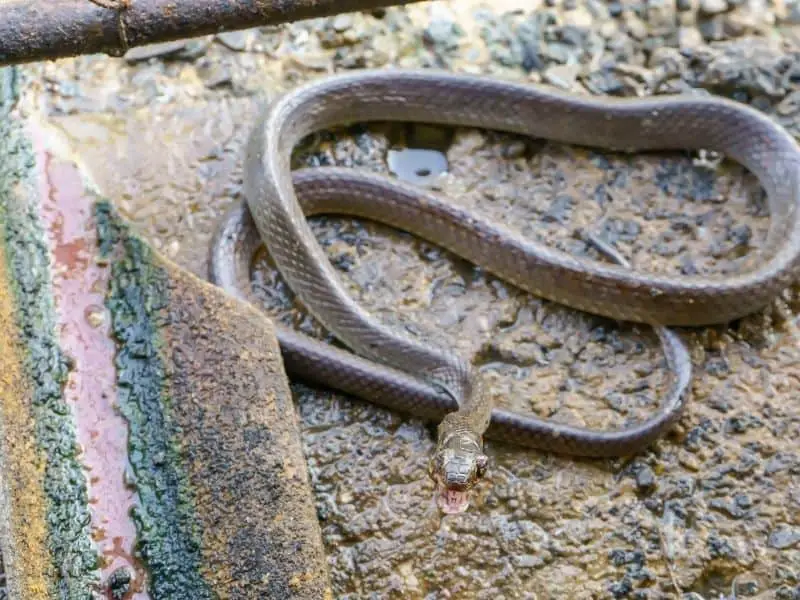
Ineffective Means Of Repelling Snakes
With the increase in environmental awareness among the public, it is now more common to see people who believe that snakes are beneficial to our ecosystems and should be preserved.
We know that they play a major and critical role in maintaining our planet’s well-being. They prevent rodent and insect pest overpopulation and help keep many diseases from spreading.
However, this does not necessarily mean that we want snakes in our yard or garden.
Unfortunately, snake repellent products continue to stay on the market despite being proven ineffective persistently.
They are mostly considered “snake oil” and are bogus. Buying them only results in a waste of hard-earned money.
Alternately, you may just opt to cultivate species of snake repelling plants in your garden to prevent it from being used by snakes as their residence.
Of course, you can always try to use mothballs and other commercial snake repellents, but be sure to strictly follow their manufacturer’s instructions to avoid harm to your pets and children.
You may also try proven and tested means of keeping away snakes by eliminating the elements in your yard that can serve to attract them. These include removing their habitats, such as piles of rocks, debris, and wood.
You can also plant snake repelling plants. You may argue that some people have said that these plants do not work to discourage snakes.
There may be truth in that statement, and you can try planting these plants to see for yourself if they are accurate or not.
However, it can be argued that these plants, even if they do not repel snakes, have other benefits, both practical and aesthetic, in your garden.
Thus, unlike potentially harmful commercial snake repellants, it does not hurt to have these plants. They can serve as aesthetic pieces to the surroundings and can freshen the air.
Plants Considered As Snake Attractants
Snakes have been known to bask a lot in flower gardens.
However, one can argue that they are actually attracted to the habitat and the presence of food in the flower garden instead of the actual, specific flowers planted in them.
Beneficial garden snakes can be encouraged to stay in gardens by providing a pile composed of rubble and rock in the garden. This may be placed at the flower garden’s edge, as recommended by the Clemson University’s Cooperative Extension.
In addition, groundcover plants and low flowering plants provide protection and refuge not just for snakes but also for other wildlife.
This may thus be the basis of the belief in flowers and groundcover plants being attractive to snakes. They are not attracted to the plants per se, but to the shelter they offer.
In addition, the most inviting flowering plants that can attract snakes include not only groundcover but also low vines and creepers, including myrtle. The low flowering plants provide hunting opportunities as well.
As stated by Lady Bird Johnson Wildflower Center, the plants that attract snakes harbor snake food items such as lizards. Plants that provide cool shade that snakes can use to cool their bodies during the hot hours of the day are also attractants to snakes.
Such plants include thick growth of plants like rosemary, jasmine, morning glory, and any other plant and flowerbed that can be found under bird feeders. These are all potential and attractive habitats for snakes.
Snakes enter your garden because they are looking for the food items that they need to survive.
These include rodents, slugs, lizards, toads, and frogs. In addition, snakes also look for safe and secure hiding and nesting places. They also want to have a flat rock or similar feature where they can bask under the sun.
Flower gardens are good places for snakes to bask in and stay, not because specific flowers and plants are there, but more importantly, because the place can serve as a habitat and food source.
It is important to know that garter snakes and green snakes are not harmful to humans.
They have no venom that can be fatal to you. And since they help the garden be free of rodent pests, it benefits you to have them around. Besides, they rarely bite and do so only when they are threatened.
Meanwhile, if you are residing in an area replete with cottonmouths, copperheads, rattlesnakes, and other venomous snake species, it may be beneficial for you to clear the plants that attract them.
These include groundcover, brush, and low vines. Removing rock piles may also discourage the snakes from hanging around or considering your flower garden and yard as their new residence.
Flowerbeds, clover beds, and groundcover plants provide shelter to rodents and serve as cool hiding places for snakes. Bird feeders attract rodents like chipmunks, mice, rats, and squirrels. These animals are all enticing food items for snakes, which attract them to your yard.
Flowerbeds that have heavy mulch are also may attractive to snakes. Brush piles and woodpiles also provide protection and shelter. If you raise a brush pile on a platform of rocks, this will retard the decaying process.
22 Plants That Can Repel Snakes
While it is true that some gardeners want snakes in their garden, it is more probable that most people want them out.
To repel snakes, planting the right species of plants may be helpful. These plants can be cultivated because they naturally deter snakes.
Gardeners know some of the common plants that repel snakes.
These include plants that evolved to repel pests using various means, like being equipped with sharp leaves and thorns as well as strong, pungent, and repelling odors.
There are four plants that are excellent choices for encouraging snakes to move along and go away from your garden. Planting a few of these may be helpful in preventing a snake infestation in your garden.
If you want, you can also plant all of these four plant species if you really feel strongly about keeping snakes away.
They will discourage snakes from staying around and urge them to slither away to look for more promising areas with better shelter and more food and other resources.
Try to see if these plants can help you keep snakes away from your garden.
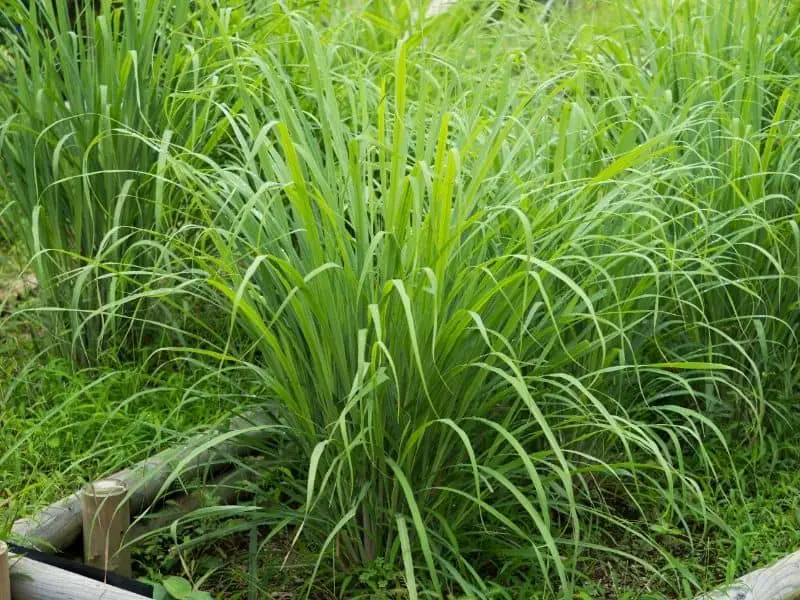
Lemongrass
Lemongrass, including West Indian lemongrass, has a strong smell of citrus that some people say deters snakes. It has a pungent aroma that is similar to the scent of lemon that, aside from driving away snakes, also drives away disease-carrying insects such as mosquitoes and ticks.
Lemongrass can be quite handy in your garden, and in addition, it is also easy to maintain. It is resistant to drought and is easy to cultivate. It also has nice foliage that adds a pleasant ambiance to your garden.
Garlic and onion
Garlic and onion work to repel snakes by emitting an undesirable smell that snakes do not like. This smell is not just unpleasant, but it also apparently serves to disorient snakes.
Garlic is especially effective in warding off snakes. When snakes crawl over the garlic clove’s papery husk, the garlic’s oily residue gets on the skin of the snake. This oil has an effect on the snake that is similar to the effect that slicing onions have on our eyes.
Snakes also have a reaction to garlic oil that is similar to the effect of pepper sprays. This makes them quickly leave your garden, and hopefully, they will remember the unpleasant experience enough to discourage them from ever returning.
Snake plant
The snake plant’s other name is a mother in law’s tongue, most likely due to its long and smoothly winding shape. Aside from being a great addition to your garden, it also serves as a deterrent to snakes.
It has been said that the mere sight of the sharp leaves of this plant, as well as its striking appearance, already discourages snakes from continuing on where the plant is situated.
This remains to be seen by scientific experimentation.
Marigold
Marigolds are plants that have an aggressive and deep-growing root system, which produces an unpleasant smell that also discourages snakes from hanging around.
Other pests also feel this effect in the garden, such as moles and gophers.
This plant has flowers that are brightly colored, coupled with a pungent aroma, which attract pollinators and other beneficial insects such as bees and butterflies. Marigold also attracts birds.
By encouraging beneficial animals to visit while driving away undesirable ones, marigold could be a sure choice for gardeners to plant in their yard.
More Snake-Repelling Plants
The snake’s way of smell is the principle by which plants that emit strong odors can repel many snakes.
One good example is lemongrass, which releases citronella oil and emits a strong fragrance that is lemon-like. Other smelly plants include herbs, allium, and garlic, which can help keep snakes away from the garden.
Such plants do not kill the snakes; instead, they make them go away from their oppressive odor.
By this time, we have established that it may be better to plant snake-repelling plants instead of using chemicals and commercial snake repellents. The former is more effective and is also a better means of protecting our ecosystems.
In addition, when we use these plants, we can maintain an organic garden.
Other plants also have snake-repelling properties because of their spiky and prickly features.
Aside from the mother-in-law’s tongue, yucca is also another pointy plant that can be effective in discouraging snakes from your garden.
Some other plants that can repel snakes are enumerated below.
Indian snake root
This plant is also known as Rauvolfia serpentina, and it has a mechanism similar to the marigold, where it uses its roots and leaves to repel snakes.
It is also used as a traditional medicine to cure snake bites, although this has no scientific basis. People also eat and rub its leaves on the skin for healing purposes.
Green chirreta
The Andrographis paniculata plant is aboriginal in India, with a bitter root and foliage taste that serves as a good repellent of snakes.
Mother-in-law’s tongue
It is also known as the Vipers bowstring hemp, which some consider the best snake repellent plant owing to its sharp and long foliage. Snakes apparently find their elongated leaves very frightening.
Mugwort
This is also known as chrysanthemum weed, which Korea and China use as medicine.
Its essential oils give it pesticidal and snake-repelling properties. It possesses nice flowers and leaves, which give off a strong odor that is apparently not liked by snakes.
West Indian Lemongrass
This is reportedly the best among all the snake repellent plants because it has always been reported to successfully clear areas of unwanted snakes. It has a scent that is like citrus, which snakes hate.
Pink agapanthus
This plant is also called Tulbaghia violacea. It is ideal in the nursery during summer because of its extraordinary resistance to heat. The scent it emits from its flowers and leaves repels snakes.
They have the added feature of having beautiful pink shading, which makes them very stylish and delightful to add to your plant collection.
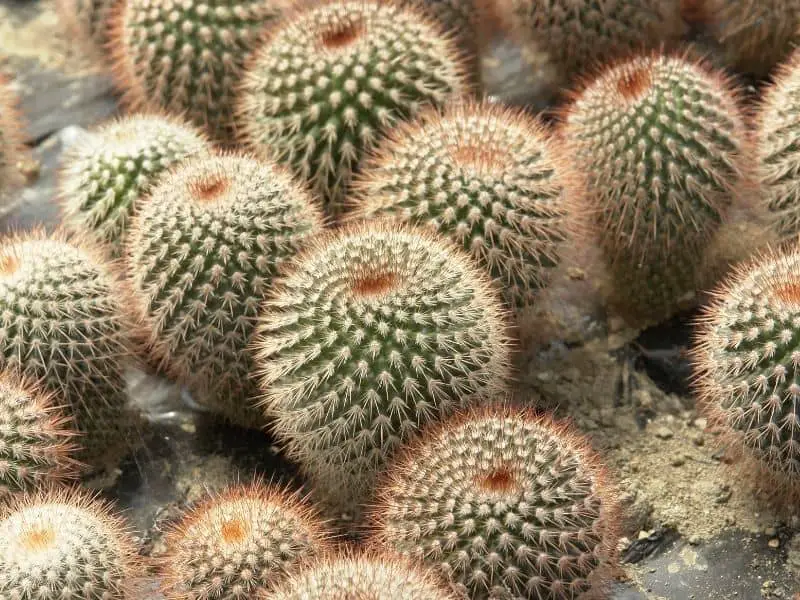
Cactus
The thistles and spikes of cacti repel snakes so that they usually avoid these kinds of plants. Cacti planted in the yard will prevent snakes from staying around.
Kaffir Lime
The entire plant, as well as portions of the leaves, repel snakes and bugs.
Onion
This plant has a sharp odor that confounds snakes. Onion cuts can be placed in areas where the presence of snakes have been observed. It produces a sulphonic and corrosive emission hated by snakes.
Capsicum annum
You know this plant better by its common name: chili pepper. Its seeds can effectively repel snakes when they are spread around the home and your garden.
Datura stramonium
This plant is also known as thorn apple. Its sour and bitter smell prevents insects and snakes from staying around.
Garcinia Kola Heckel
These plants are also called Bitter Kola trees, whose seeds can repel snakes by cutting or grinding the seeds into little pieces and spreading them.
Nicotiana tabacum
This plant is known very well as the tobacco herb. It is considered to be among the best natural remedies for repelling snakes away from people’s homes.
Ocimum gratissimum
This plant is commonly known as the scent leaf, which emits a disgusting odor that confounds snakes and causes them to vacate the area immediately.
Turnera ulmifolia
This plant is called the yellow alder, which has a sharp appearance and appealing color. It is also useful in preventing snakes in your area.
Vetiveria zizaniodes
This vetiver plant has sharp leaf margins that serve the same purpose and effect that cacti have on snakes.
Roses
A number of case studies show that roses have a snake repellent effect. They also have pointed stems so that when they are used to cover fences, they may have a discouraging effect on slithery snakes.
Keeping gardens free of snakes
You can have a garden and yard that are free from snakes so that you can feel safe to wander and play in them. Try to plant the snake repelling plants that we discussed above.
It is recommended to plant several of these plants and place them in strategic locations to get the maximum benefit.
There may be no single plant among them that can eradicate snakes effectively. Instead, it is a good idea to plant a combination of these repellent plants to make your strategy work.
Complement Plants With Other Repelling Methods
Aside from cultivating various plants and trees to repel snakes, it is also very essential to complement them with other prevention and repelling methods that do not necessarily involve plants.
These methods are considered essential techniques without which you may never be successful in your snake eradication efforts.
Snake repellents
It is important not to put your complete trust or reliance on commercial snake repellent products. The manufacturers of these products may falsely lead you to feel secure about their effectiveness.
In truth, however, they have not been proven to repel snakes at all. It is natural for their manufacturers to make exaggerated claims of repellent properties, even if this may not be true.
While the US Department of Agriculture may have said that their active substances, including naphthalene and eugenol, can effectively chase away snakes.
But for sprayable products, this is only true if you directly spray the snake on its face or otherwise fumigate an enclosed area.
This is also the same for traditional home remedies that claim to repel snakes. They may also contain a lot of eugenol and may include clove oils, bay leaf, nutmeg, and cinnamon. Again, however, they may not be as effective as is commonly assumed.
Always apply common sense and couple it with research on snakes’ habits and ecology to come up with effective ways to repel them from your yard or garden.
Learn more about snake repellents and their effectiveness here.
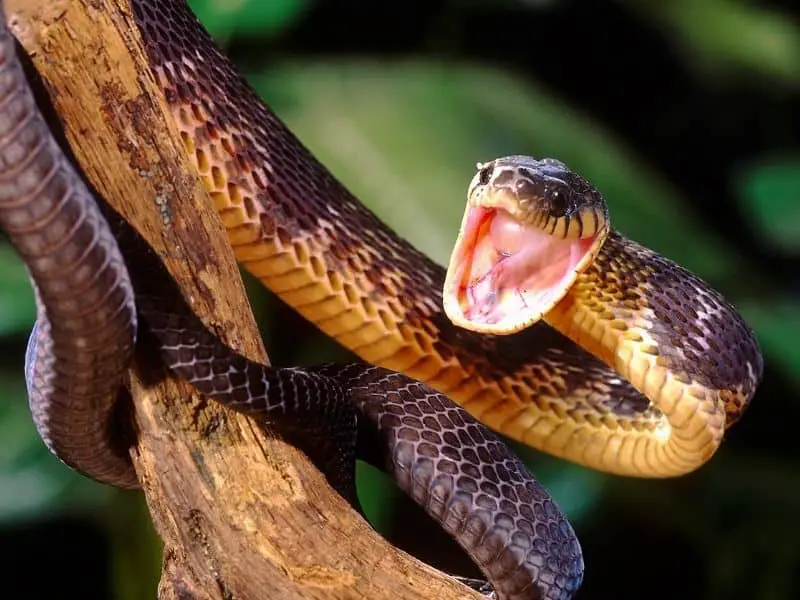
Remove hiding places
It is important to remove structures or piles around your property that can potentially serve as shelter for snakes.
Snakes are not comfortable with areas that have no places for hiding. They will try to look for more hospitable and secure areas that will help them feel safer.
Therefore, to discourage them from taking residence in your yard, remove every kind of pile, whether it be lumber, rocks, wood, debris, or brush. These piles are open invitations for snakes to use them as a place to hide.
You can try to elevate those materials that are not practical to remove, such as compost bins and firewood stacks. Piles of firewood are very much loved by snakes as shelters, while compost bins are popular sites for snakes for laying eggs.
Keep these materials on a rack, which can be made of a plywood sheet placed over a stack of blocks or bricks.
The elevation should be a minimum of 18 inches from the ground. Snakes do not like hiding places that are not in direct ground contact.
You should also locate stacks as far from your house and garden as possible.
Seal off cracks and crevices
You should also inspect other potential hiding areas in structures and buildings that are also attractive to snakes. Seal off all holes that have openings bigger than one-fourth inch.
You may use hardware cloth and caulking, or you may opt instead to use boards, bricks, foam insulation, or sheet metal. Cracks can be sealed by mortar or caulking.
Trim off vegetation
Keep grasses, brush, trees, and any other tall vegetation present in your yard or garden well-trimmed and mowed.
Eradicate garden prey pests
It is also important to eradicate pests and other animal species that serve as food for snakes.
All snakes are carnivorous, with different snake species varying in their preferred food items. Snake prey range from insects, rats, mice, squirrels, spiders, birds, and other animals.
If a snake persistently stays in your garden, it is enjoying some benefits that you have not yet detected. This could be a shelter, cooling area, hiding place, or the presence of snake prey.
Eliminate these animals, and you deprive snakes of food and resources. Eventually, they will be forced to look somewhere else for their meals and shelter.
Fun Facts About Snakes
Are essential oils effective as snake repellents?
Scientists have reported that various kinds of essential oils will not repel snakes. These include cinnamon oil, castor oil, geraniol, clove oil, peppermint oil, and others.
A total of 70 percent of consumers consider them effective, however, and according to the manufacturer, they can repel both garter snakes and rattlesnakes.
Does the feces of dogs repel snakes?
Unfortunately, dog poop is not effective at keeping snakes at bay. It does not repel them nor prevent them from entering the garden, yard, or home. Snakes do not consider the presence of dog poop to indicate that they are invading the territory of your dog.
This is due to the fact that territorial markings tend not to cross between different species of animals, more so between mammals such as dogs and reptiles such as snakes. Snakes will not be scared by dog poop, even if it is a large predator.
Usually, snakes are only motivated by self-preservation and survival. In the wild, they have been shown to simply glide or crawl over the poop of many different animals. They are unlikely to be deterred by dogs unless they see or hear them.
Sources
- https://www.gardeningchannel.com/keep-snakes-away-garden/
- https://www.gardenguides.com/12562724-which-flowers-types-attracts-snakes.html
- https://trinjal.com/plants-herbs-that-attract-snakes/
- https://www.gardeningknowhow.com/plant-problems/pests/animals/using-snake-repelling-plants-for-gardens.htm
- https://trinjal.com/snake-repellent-plants-home-garden/
Photo credit: ©canva.com
Medical Disclaimer: TheHomePestControl is a digital publisher and does not offer personal health or medical advice. The contents of this website are not intended to substitute for professional medical advice, diagnosis, or treatment.
Affiliate Disclaimer: As an Amazon Associate, I earn from qualifying purchases made on our website. If you make a purchase through links from this website, I may earn a commission at no additional cost to you.

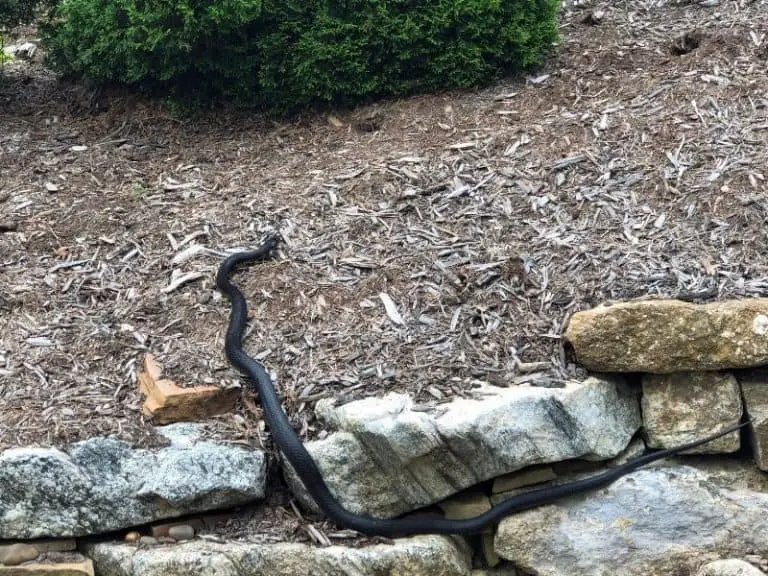
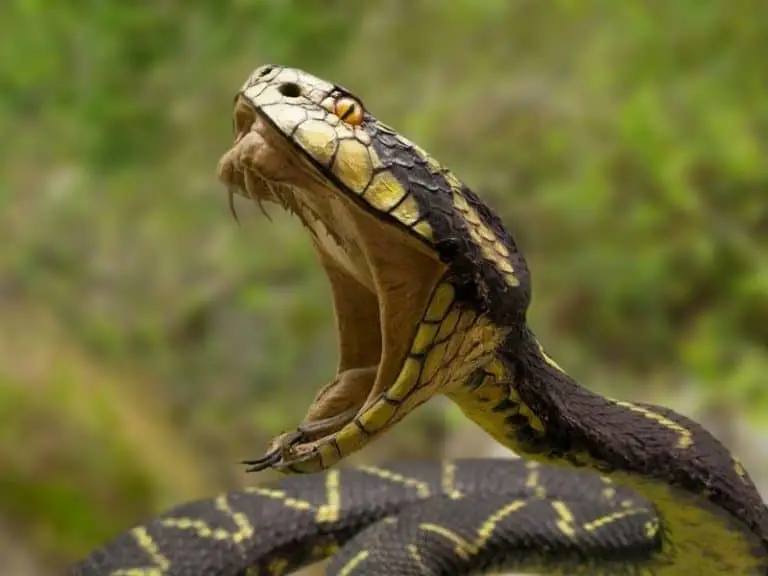
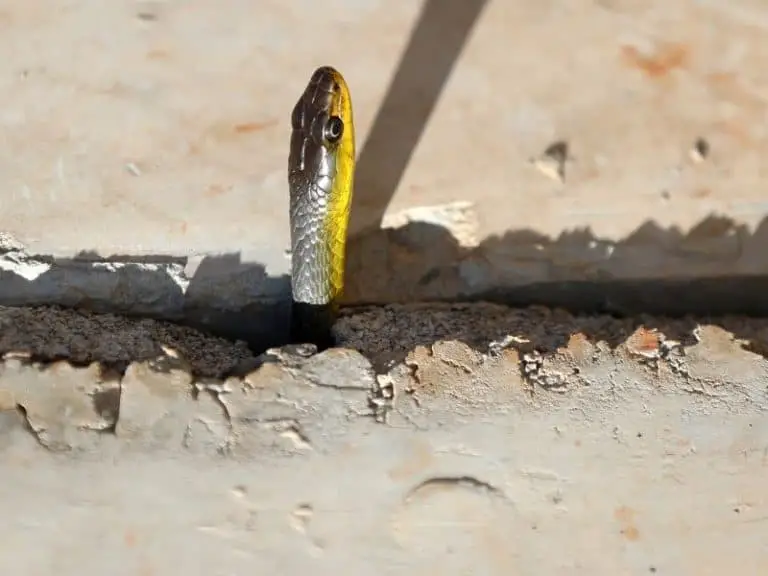
![Who to Call When You See a Snake [For Each State]](https://wypestcontrol.com/wp-content/uploads/catch-snake-768x576.jpg)
![Does Victor Snake-A-Way Work [Expert Opinion]](https://wypestcontrol.com/wp-content/uploads/victor-snake-away-768x576.jpg)
![Can Cats Sense Snakes [Yes, And Here’s What They Do]](https://wypestcontrol.com/wp-content/uploads/cat-attacking-snake-768x576.jpg)